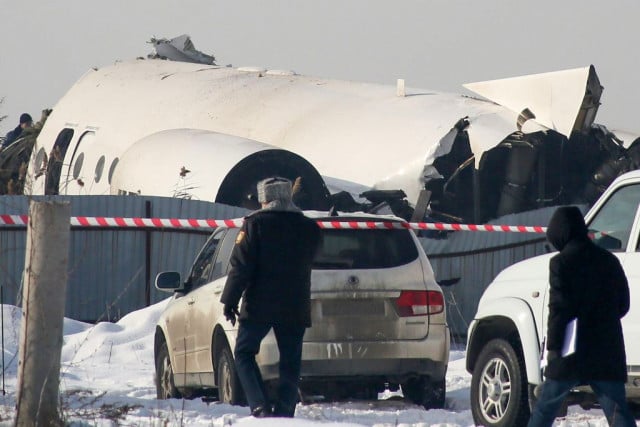The Challenges in Creating a National Dialogue on Environmental Protection in Cambodia

- Sao Phal Niseiy
- June 5, 2020 2:53 AM
Cambodianess’ Sao Phal Niseiy sat down with Sar Mory, who, born to a family of farmers in Prey Chhor district, Kampong Cham province, now holds a bachelor’s degree in Law from Royal University of Law and Economics and a master’s degree International Human Rights Law from Pannasastra University of Cambodia. Identifying himself as a human rights and environmental defender, Mory has a decade of experience in youth empowerment, community engagement, human rights and environmental rights advocacy.
Sao Phal Nisey: You’ve been involved in environmental advocacy works over the past years. What motivated you to get involved?
Sar Mory: I have been working in environmental advocacy and education for almost a decade. I first started paying attention to environmental issues after I joined the first national protest of Prey Lang Community Network (PLCN) at Freedom Park in May 2011. The media reported that the PLCN was staging a protest inspired by Avatar, where protesters would paint their faces blue like the movie and take a stand against deforestation.
The Avatar protest fascinated me, and I participated in the first-ever protest with the community members. Then I attended the forest patrol with the community members in March 2012, which uncovered illegal logging and large-scale deforestation related to economic land concessions and mining. This helped me understand how the government’s process of granting land concessions has excluded voices raised by local peoples and failed to create opportunities for meaningful participation by all stakeholders.
From there, I have expanded my environmental advocacy to include water governance issues on the Mekong River and its tributaries, which have been threatened by the hydropower dam development.
Sao Phal Niseiy: What are the most pressing challenges you have experienced while undertaking your works?
Sar Mory: The harassment and threats levied against environmental defenders and youth activists are the greatest challenges which I have encountered. For instance, when I conducted a training with Prey Lang youth and community in Kampong Thom or Preah Vihear; the commune and district police officers came to close down our training without legal justification. Secondly, when I joined the forest patrol and forest crime investigation along with community members, we had some encounters with loggers.
Furthermore, I have been representing my organization, Cambodian Youth Network—an organization that has been playing a key role in coordinating and leading youth campaign during the World Environmental Day every year since 2012. With the tightly shrinking civic space in the last few years, we always celebrate the event in the form of a public gathering or a march toward the relevant state institution such as the National Assembly and the Ministry of Environment to deliver statements and call for intervention from those concerned institutions.
Lately, I’ve been dealing with cyber harassment from fake Facebook accounts when I expressed my views regarding the illegal logging issues in the country.

Sao Phal Niseiy: Cambodia encounters many issues ranging from climate change to deforestation and to pollution, but among them, what do you think is the most serious issue that requires all of us to act fast?
Sar Mory: Cambodia has experienced some of the fastest loss of natural forest cover in the world. The natural forest cover in Cambodia has decreased dramatically in the last decades. In 1973, Cambodia had 13.14 million hectares of total forest land, but by 2014 the forest cover has been reduced to 8.7 million hectares, according to the data of Open Development Cambodia. The deforestation wreaks havoc on livelihood of local communities, threatening cultural practices, biodiversity, wildlife species and watershed. Most importantly, it significantly exacerbates climate change. Currently, the issue of deforestation is crucial, what is needed is participation from the youth to tackle illegal logging and timber laundering in Cambodia. If we can protect the current natural forest cover, I think we don’t need to invest in reforestation.
However, I think we all should pay attention to some grim issues such as pollution both in our water and in our air. Despite being seen as a newly emerging issue, it will have a huge negative impact on the environment and create numerous public health problems in the long run. For instance, the pollution from the mining extraction, where very few measures are put in place to rectify the damage done following a mining operation, but also the volume of pesticides used in the agro-industrial sector are a concern—a lot of these issues stem from improper management and misuse.
Furthermore, the government is much more reliant on unsustainable source of energy such as coal-fired power plants, which is commonly known as one of the most polluting means of generating energy. We know that the government has just moved to just approve two new projects—the 700-megawatt power plant in Koh Kong province and a 200-megawatt plant in Oudor Meanchey province. The increasing number of coal power stations is contrasting with the government’s commitment to upholding both the 2015 Paris Climate Agreement and the United Nations’ 2030 Agenda of Sustainable Development Goals.
Sao Phal Niseiy: How do you view Cambodian people’s behavior toward environmental issues? Are they beginning to care more or nothing has changed?
Sar Mory: From my point of view, Cambodian people, especially youngsters, have begun to care more about environmental issues such as the exploitation and destruction of our natural resources. However, the behavior of Cambodian people toward environmental issues is still limited in terms of their participation, which is often due to a limited understanding, people’s work and economic situations, but also the continually shrinking civic space. I would like to raise a few examples regarding these challenges.
Firstly, the arrest of youth activists for their efforts to protect natural resources and the subsequent restriction of youth activities on the ground have discouraged active and meaningful participation in environmental protection. In recent years, there has been an increasing number of youths traveling to visit eco-tourism sites such as waterfalls and forest trekking in the Areng valley, in Cardamom and other places, but it’s difficult to engage them to join the campaign to protect these natural resources because of discouraging environment. Furthermore, if we look at the issue of plastic use and trash management, the general public also expresses their concerns. However, many of them still haven’t changed their behavior yet in order to reduce plastic consumption.
Sao Phal Niseiy: So what are your long-term goals in advocating for the environment?
Sar Mory: I will continue my environmental rights advocacy and education with young people and grassroots community, particularly focusing on natural resources governance and energy issues. I will also improve my advocacy strategies by using evidence-based advocacy such as action research or technical research on environmental issues. It may be idealistic, but I want to generate a national dialogue on environmental change, natural resource protection and help to build strong initiatives led by young people to safeguard Cambodia’s natural heritage.















